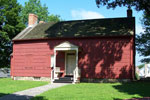White Plains
About White Plains
Early in the 20th century, White Plains’ downtown area developed into a dominant suburban shopping district and featured branch stores of many famous New York-based department and specialty stores. Some of these retail locations were the first large scale suburban stores built in America, and ushered in the eventual post-World War II building boom. With the construction of the parkways and expressways in the 1940s and 1960s, White Plains’ role as a destination retail location was only enhanced. Among some of these early stores were such storied names as B. Altman & Co., Rogers Peet, Saks Fifth Avenue, Alexander’s, Macy’s, Wallach’s and a short-lived branch of Bergdorf Goodman, which was later converted to sister chain, Neiman Marcus, in 1981.
 During the late 1960s, the city of White Plains developed an extensive urban renewal plan for residential, commercial and mixed-use redevelopment that effectively called for the demolition of its entire central business district from the Bronx River Parkway east to Mamaroneck Avenue. By 1978, the urban renewal program centered around the construction of the Westchester County Courthouse (1974), the Westchester One office building (1975), the Galleria at White Plains mall (1978), and a number of other office towers, retail centers and smaller commercial buildings.
During the late 1960s, the city of White Plains developed an extensive urban renewal plan for residential, commercial and mixed-use redevelopment that effectively called for the demolition of its entire central business district from the Bronx River Parkway east to Mamaroneck Avenue. By 1978, the urban renewal program centered around the construction of the Westchester County Courthouse (1974), the Westchester One office building (1975), the Galleria at White Plains mall (1978), and a number of other office towers, retail centers and smaller commercial buildings.
Beginning in 2000, the city’s permanent population experienced a growth spurt as additional apartment buildings were constructed. An infusion of urban professionals, drawn by the city’s relatively moderate housing costs and close commuting distance to midtown Manhattan (35 minutes by express train) gave the city a cosmopolitan atmosphere. However, in large part because of its proximity to New York, the cost of living in White Plains, although lower than that of New York City itself, is by some measures among the highest in the world.